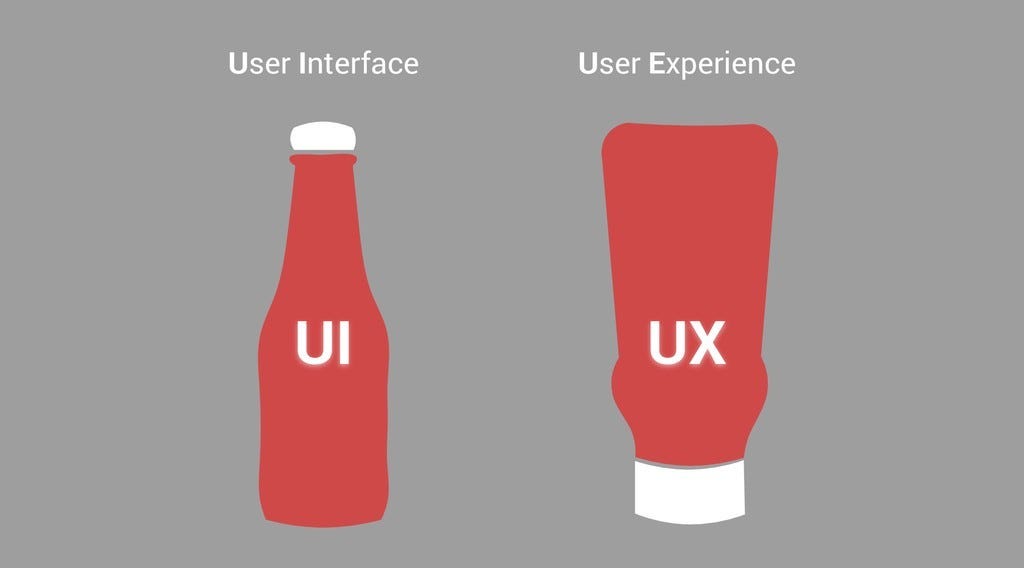I know I have and I’m sure I’m not the only one. My problem is, however, that I always come up with what to say after the moment has passed. I get that eureka moment in the elevator after that one discussion with my colleague, or when I have put down my phone. It is too late then.
This got me thinking. I need a way to structure my thoughts if I really want to improve the position and general knowledge of what UX is in the world. So without delaying things further, let’s take a look at some common misconceptions about UX and how you can get past them.
The UI vs UX ketchup bottle
Ah, yes. That picture of the two ketchup bottles. It is supposed to show what the difference between UI and UX is. The left bottle is just UI with a broad base so that the bottle can stand securely. Yet, this is troublesome for users since they have to flip it around when they want to use it. It is a challenge for people with dexterity issues. Not to mention the time it takes for the ketchup to flow down once you flip the bottle.

UI vs UX. Image by Tim O’Sullivan.
The UX solution, according to the image, is flipping the bottle design so that the user doesn’t have to flip the bottle anymore. This fixes the dexterity and content flow issues, which is very good of course.
However, this is not UX. The misconception is that a differently shaped bottle is a metaphor for what we call UX.
Actually, both bottles are UI. In this case, the bottle is the bridge between the user and the desired user experience. When we design applications, this bridge is called the user interface, or UI in short. The second bottle is an improved version of the first bottle based on careful user observation, testing, and design thinking.
The resulting user experience of a bottle of ketchup that is more accessible, easy to use, and good looking is achieved by UX design processes. The bottle itself, however, is not UX. It is UI. Just like the first bottle.
Jared Spool’s 2016 tweet on UX portfolio’s
Don’t you just hate it when people misinterpret something someone says? Jared Spool is somewhat of a UX rockstar. His Twitter profile is a gold mine full of valuable UX knowledge. Yet, people seem to focus on one particular tweet from years ago.
“If you’re trying to hire designers & require a portfolio, you’re not gonna get top talent. The best designers don’t have them. Too busy. ”— Jared Spool
A famous person from the field of design says the top design talent doesn’t have a portfolio. Now I don’t have to spend time and effort to create a portfolio myself!
This of course isn’t how it works. A tweet from a well-known UX professional isn’t an excuse to be lazy and not work on your portfolio.
You don’t need a portfolio only when your actions speak for you. If you’re famous, built and sold a well-known startup, or have a great design-related product, you don’t need a portfolio. You don’t ask Bill Gates or Jony Ive for a portfolio. Everybody knows who they are and what they do.
For everybody else, yes, you will need a portfolio. Design is a very portfolio-driven field of work. It is a great way of showing who you are and what you are capable of.
Someone with a portfolio isn’t always a great designer and someone without a portfolio isn’t always a bad designer. The one just doesn’t exclude the other.
Instead of focusing on Jared’s 2016 tweet, why don’t you focus on his series of tweets that provide valuable tips and tricks on creating great portfolios? It is the road less traveled, but at least it will get you somewhere.
#ux #visual-design #creativity #productivity #design